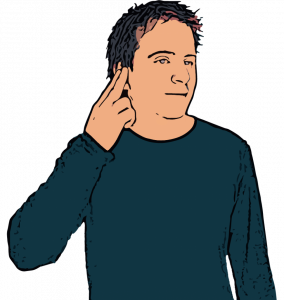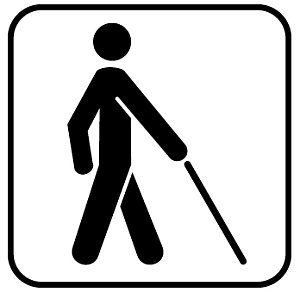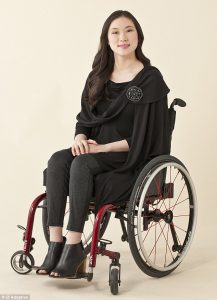The last present
Don’t tell your students the topic of the lesson yet. Put them into groups of 3-4 and ask them to think about the last present they got.
- What was the occasion?
- Who did they get it from?
- How did they react?
- …
Conduct open-class feedback and encourage students to share their experiences.
Watching the video
Tell students they are going to watch a short video entitled “The Present”. Play the clip until 0:54 and ask students (still in groups) to try to answer similar questions, but now with regard to the video.
- What’s the occasion?
- Who gives a present to whom?
- What do you think the present is?
- How is the boy going to react?
- …
Conduct open-class feedback and put the ideas on the board.
Then play the video until 2:40 and ask students to predict what is going to happen. Again, put the ideas on the board. When you have finished, play the rest of the video.
Reflect and share
Put the following questions on the board (or project them) and let your learners discuss them.
- What’s the message of the film?
- How does the boy’s story make you feel?
Conduct open-class feedback.
Adjectives
Ask students to collect adjectives they would use to describe feelings in connection with the film: those of the boy, the mother, the dog, and their own. Collect the ideas. At the end of the activity, you might want to teach the following adjectives, too (if they are not mentioned by the students):
helpless, disappointed, enthusiastic, negative, acquiescent, resilient, empathic, hopeless, motivated, frustrated, excluded etc.
Who do these adjectives describe: the boy, the mother, the dog, or the students themselves?
Giving advice
After discussing feelings and reactions, ask students to imagine that they will meet the boy and the mother in the film and have the chance to talk to them. What advice would they give them? Encourage them to use should/shouldn’t/have to/don’t-doesn’t have to/must/mustn’t.
Now expand the activity. Tell students that (since they did a really good job!) they also have the chance to give advice to every person on Earth. They are offered the chance to choose 5 pieces of advice and forward them to everybody in the world. Ask them to agree on the 5 pieces of advice that will be forwarded by you. What advice would they give people about persons with disabilities?
Language dos and don’ts
By this stage of the lesson, students will probably have used language related to disabilities. Throughout the lesson, make notes how students refer to persons with disabilities. Now show them the pictures below and ask them to say what they call the following people. Take notes.
Let students discuss, agree and disagree with each other, and say what they know about the correct form. Then present the right column of the following table first. If the correct forms in the left column have already been mentioned, write them in. For the others, ask students to think of the correct forms. Give them if necessary.
Disability VocabularyDos and Don’ts |
|
|
Affirmative Language |
Language to Avoid |
|
person with a disability, people with disabilities, disabled |
handicapped, cripple, victim, crip, unfortunate, defective, handi-capable |
|
wheelchair user, uses a wheelchair |
wheelchair-bound |
|
blind, low vision, partially sighted |
sightless, the blind |
|
mobility disability |
deformed, maimed, paralytic, lame |
| psychologically/emotionally disabled, emotional disorder |
the mentally ill, mental, crazy, insane |
|
developmentally disabled |
retard, mentally defective |
|
birth anomaly, congenital disability |
birth defect, mongoloid |
|
a person who is deaf or hard of hearing |
suffers a hearing loss, the deaf |
|
person with epilepsy |
spastic, epileptic |
|
speech disability, communication disability |
tongue-tied |
|
non-disabled |
healthy, normal, whole |
| non-vocal, a person who is non-verbal |
mute, dumb |
|
person of short stature |
dwarf |
| learning disability |
slow |
|
chronic illness |
suffers from, afflicted, stricken with |
Source: http://www.michellehenry.fr/disabled.htm
International Day
Finally, raise awareness of the International Day of Persons with Disabilities that “aims to promote the rights and well-being of persons with disabilities in all spheres of society and development, and to increase awareness of on the situation of persons with disabilities in every aspect of political, social, economic and cultural life.” (UN website)
Ask students to guess the following data.
- _____ people: world population
- Over _____ people in the world have some form of disability
- More than _____ disabled persons are children
- Children with disabilities are almost _____ times more likely to experience violence than non-disabled children
- _____ % of all people with disabilities live in a developing country
- _____ % of disabled persons cannot afford health care
- _____ countries have signed the Convention on the Rights of Persons with Disabilities
Key: 7 billion / over 1 billion / 100 million / four / 80 / 50 / 160
Optional tasks
Famous people with disabilities
Tell students that many famous people have some form of disability. Here is a list of some renowned people with disabilities. Choose the ones relevant to your students and ask them to match the people with the disabilities.
Word cloud
At the end of the lesson (or in another lesson or as homework) ask students to sum up what they have seen and talked about. You might ask them to write a short summary or create a word cloud about disabilities. If your learners can use technology in class (or at home), this should be easy – they can create one on the Internet. Should you (or the students) be in favour of more traditional ways of poster-making, they can make one on paper. One possible word cloud looks like this:





